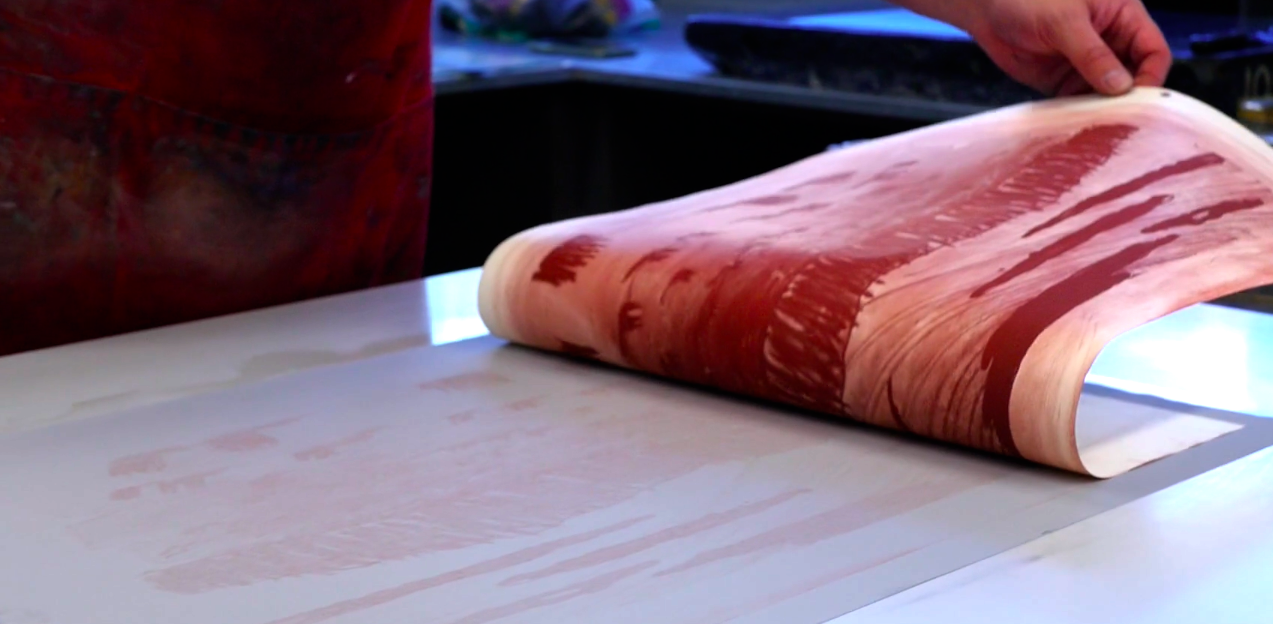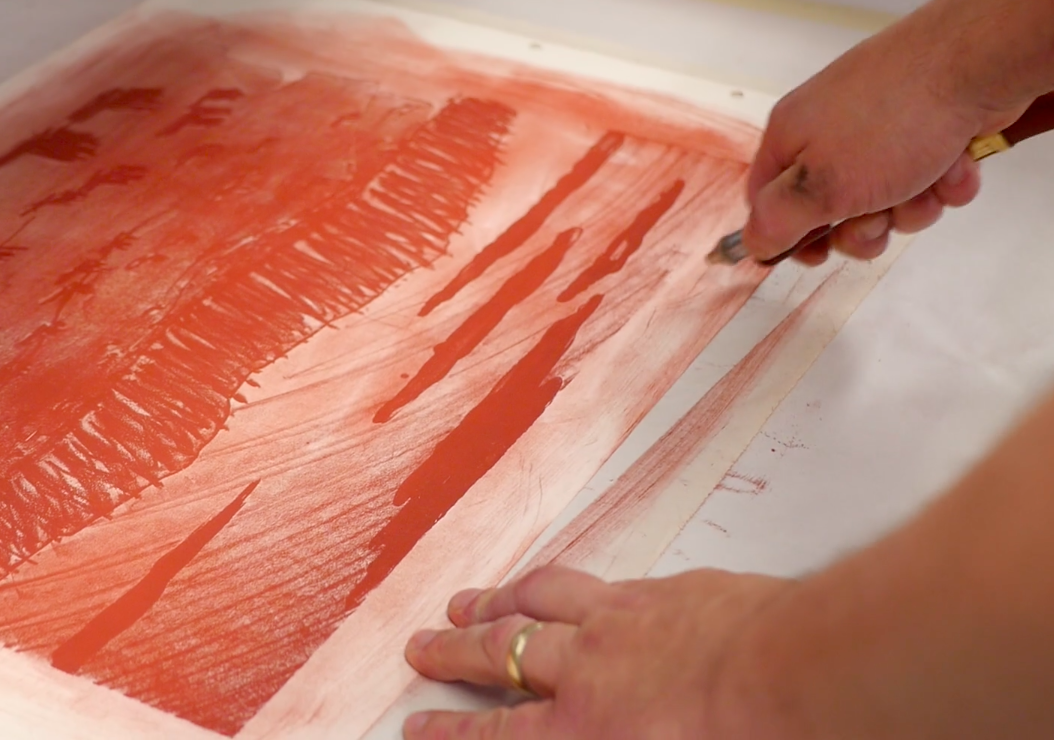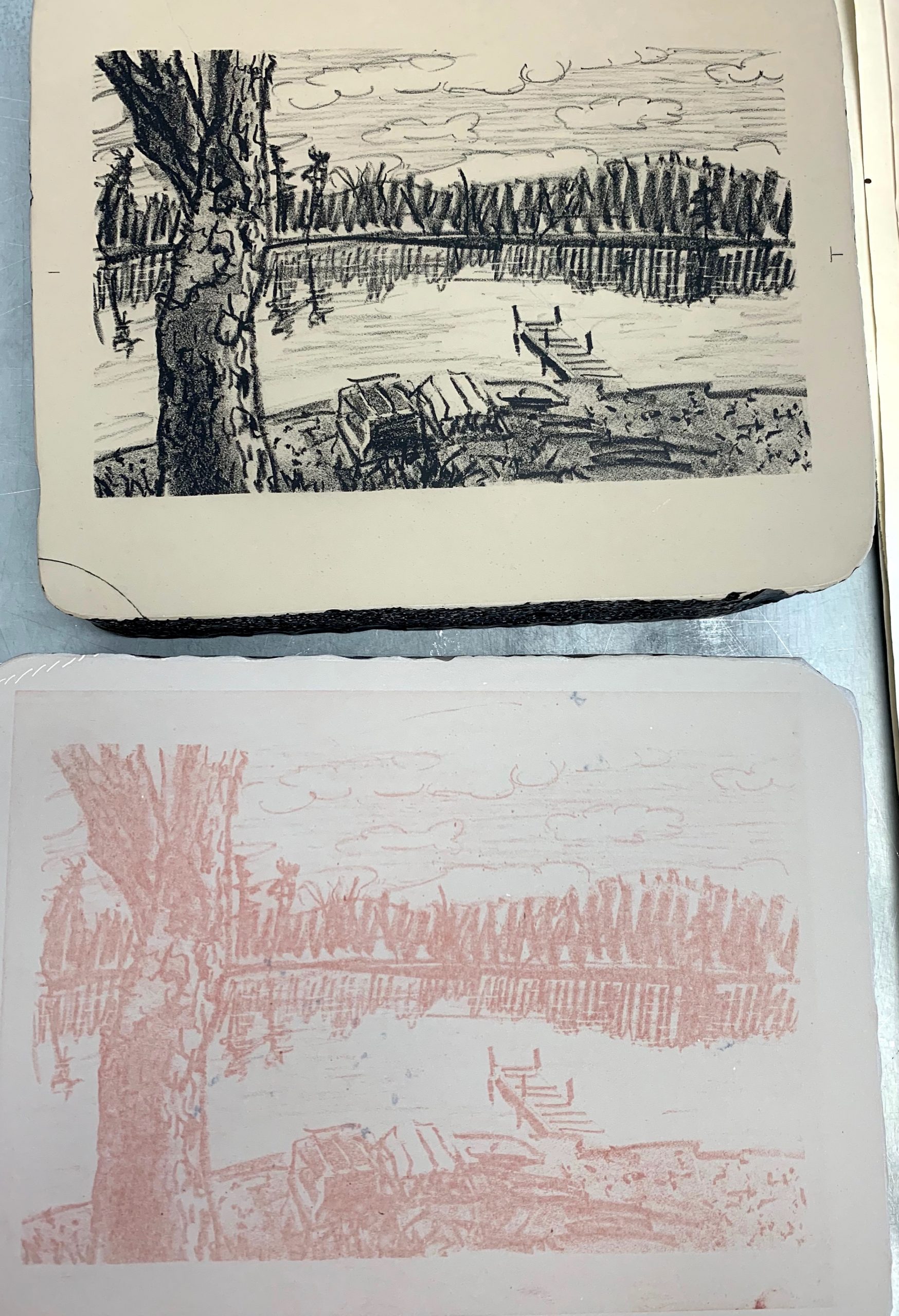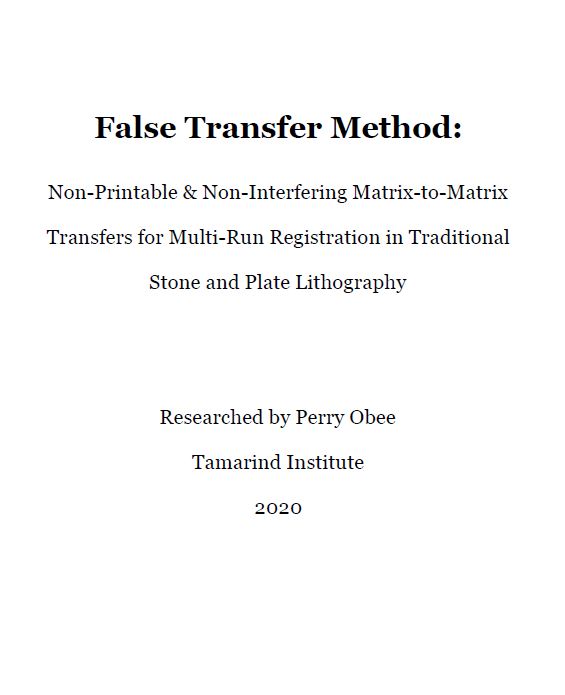Researched by Perry Obee
Tamarind Apprentice Printer, 2019-2020
–Full Research Paper at the End of this Post–

My research was to discover a method that would allow printers and artists to create additional color layers with perfect registration on the traditional surfaces of stone and plate without having to resort to cumbersome or tedious processes. The current technique most often employed involves tracing a previous drawing onto a new matrix. This method is labor intensive which can interfere with the creative process, and it can be inaccurate depending on the skill and patience of the person doing the tracing. In other lithographic processes, such as photo-lithography, we are able to draw each layer on a transparent polyester sheet which allows for perfect registration with previous layers. My research was to develop a method on the traditional surfaces of stone and plate that would allow the same ease as photo-litho of seeing the previous layer’s location of key design elements whilst creating additional layers.
I followed the methods discussed in historical treatises and referred to as a false transfer, in which a print is pulled from an initial matrix, dusted with a powdered pigment, and then transferred to a new matrix. This method will transfer the pigment without the ink, it will not print, and it allows the artist to make a new drawing over the transfer without interference. I went further than the historical methods to test and develop a precise step-by-step process that would be reliable and produce consistent results. In particular, I was interested in a technique that would transfer the most subtle and delicate marks and tones, would not interfere with new drawing, and would not be burdensome to the printer or artist.
I tested various substrates, dusting powders and pigments, methods for cleaning the dusted print of excess dust, and methods of producing the transfer through the press. My conclusions are that it is possible to get a clean and robust non-printing transfer of even the most subtle and delicate marks and tones which will not interfere with new drawing; thus, allowing the printer to create new layers with perfect registration.



